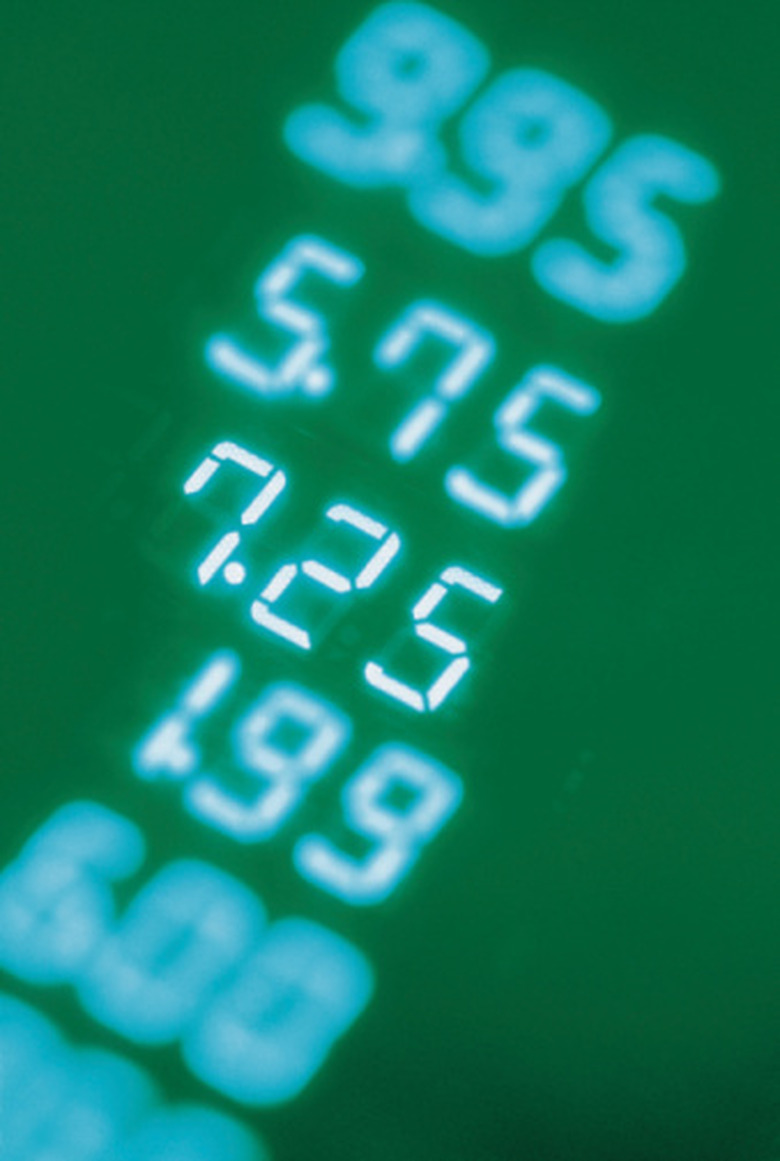How To Convert Repeating Decimals To Percentages
Decimals are used to express a value that is less than or greater than one whole. Numbers that are to the left of a decimal are greater than one, while numbers to the right of a decimal are less than one. The decimal number system's origin is the base ten system. Repeating decimals are those that contain a never-ending continuation of a numeral, such as .3333333. Percent means out of 100 and is closely related to decimals. To convert decimals to percents you simply multiply the decimal by 100.
Step 1
Decide what place value you want your decimal to represent, such as tenths, hundredths or thousandths. Underline the place value so you have a reference point for rounding.
Step 2
Round your repeating decimal to the nearest place value of your choice. For example, if your repeating decimal is .555555 and you want to round it to the nearest hundredth, you would round off your decimal as .56 because when rounding if the number to the right of your place value is five or greater you round up. If it were four or less, you would stay the same. For example, .444444 would be rounded to .44.
Step 3
Multiply your rounded decimal by 100 to get a percent.
References
- Math is Fun: Decimals, Fractions and Percentages
- Dummies.com: How to Round Off Decimals and Fractions
- "Everyday Mathematics Student Reference Book: Grade 5"; The University of Chicago School Mathematics Project; 2007
Cite This Article
MLA
Waldo, Danny. "How To Convert Repeating Decimals To Percentages" sciencing.com, https://www.sciencing.com/convert-repeating-decimals-percentages-8627646/. 24 April 2017.
APA
Waldo, Danny. (2017, April 24). How To Convert Repeating Decimals To Percentages. sciencing.com. Retrieved from https://www.sciencing.com/convert-repeating-decimals-percentages-8627646/
Chicago
Waldo, Danny. How To Convert Repeating Decimals To Percentages last modified March 24, 2022. https://www.sciencing.com/convert-repeating-decimals-percentages-8627646/
